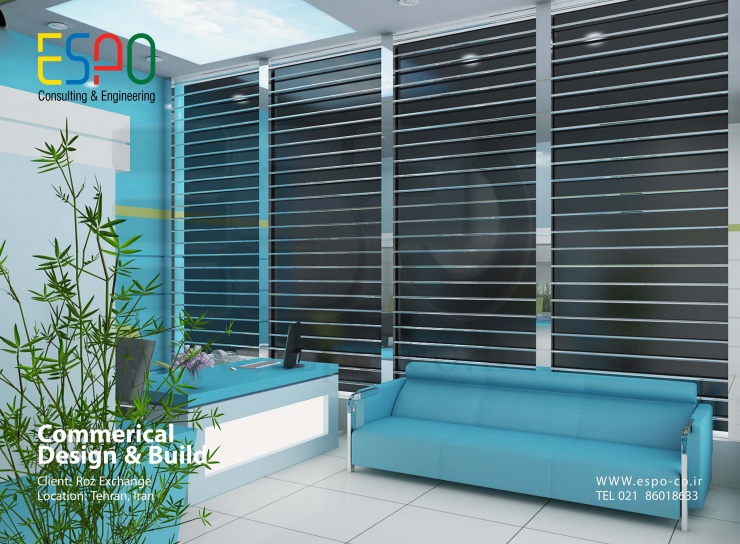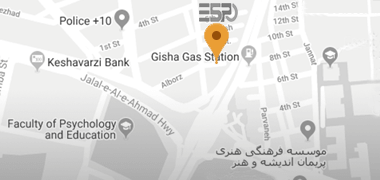
طراحی و اجرای صرافی، به دلیل ماهیت خاص فعالیتهای آن، نیازمند توجه به جزئیات مهمی در جنبههای امنیتی، عملکردی و زیباییشناختی است. صرافیها به عنوان مکانهایی که مشتریان برای تبادل پول و ارز به آن مراجعه میکنند، باید فضایی ایجاد کنند که هم حس اطمینان و امنیت را به مشتریان منتقل کند و هم در عین حال فضایی کاربردی و زیبا باشد.
در ادامه، برخی از جنبههای کلیدی طراحی و اجرای صرافی را بررسی میکنیم:
1. امنیت
• سیستمهای امنیتی: مهمترین عنصر در طراحی صرافی، امنیت است. صرافیها معمولاً با مبالغ زیادی پول و ارزهای مختلف سر و کار دارند، بنابراین نصب سیستمهای امنیتی پیشرفته مانند دوربینهای مدار بسته (CCTV)، سیستمهای هشداردهنده و دربهای ضد سرقت ضروری است.
• محافظت فیزیکی: طراحی داخلی صرافی باید به گونهای باشد که کارکنان و داراییها از دسترسی مستقیم افراد غیرمجاز محافظت شوند. استفاده از پیشخوانهای شیشهای ضد گلوله، دربهای محافظ و اتاقهای امن برای نگهداری پول و ارز از اهمیت بالایی برخوردار است.
• دربهای کنترلی: ورودیها و خروجیهای صرافی باید دارای دربهای کنترلی باشد که از ورود و خروج ناگهانی جلوگیری کرده و امنیت را بهبود بخشد.
2. چیدمان و فضای کاری
• کارآمدی فضای داخلی: چیدمان صرافی باید به گونهای باشد که جریان کاری روان و منظم باشد. کارکنان باید دسترسی آسان به سیستمهای مورد نیاز و فضای کافی برای انجام معاملات داشته باشند. فضای پشت پیشخوان باید به طور بهینه برای نگهداری اسناد، ارزها و تجهیزات مورد نیاز طراحی شود.
• تفکیک فضای مشتریان و کارکنان: باید فضایی مشخص برای مشتریان ایجاد شود که بتوانند بدون اختلال با کارکنان در ارتباط باشند، اما دسترسی به فضای کاری کارکنان نداشته باشند. پیشخوانهای محکم و مرزبندی مناسب میتواند به تحقق این هدف کمک کند.
3. طراحی بصری و دکوراسیون
• حس اعتماد و حرفهای بودن: طراحی داخلی باید حس اعتماد، امنیت و حرفهای بودن را به مشتریان القا کند. استفاده از رنگهای ملایم و روشن و متریالهای با کیفیت مانند سنگ، شیشه و فلزات براق میتواند به ایجاد فضایی مدرن و حرفهای کمک کند.
• نورپردازی مناسب: نورپردازی باید به گونهای باشد که فضای داخلی روشن و دلنشین به نظر برسد، در عین حال امنیت نیز تقویت شود. استفاده از نورهای متمرکز در نقاط کلیدی مانند پیشخوان و نمایشگرها میتواند تمرکز را بر فعالیتهای اصلی صرافی ایجاد کند.
4. فضای انتظار و راحتی مشتریان
• صندلی و فضای نشیمن: برای مشتریانی که منتظر هستند، باید فضای راحت و مناسبی برای نشستن در نظر گرفته شود. صندلیها باید ارگونومیک و راحت باشند تا مشتریان در طول انتظار احساس رضایت داشته باشند.
• نمایشگرها: استفاده از نمایشگرهای دیجیتال برای نمایش نرخهای ارز به روز، اخبار مالی یا اطلاعیههای مهم میتواند کمک زیادی به مشتریان کند و به بهبود تجربه کاربری آنها منجر شود.
5. رعایت استانداردهای فنی
• شبکه و تجهیزات کامپیوتری: صرافیها برای انجام معاملات به سیستمهای کامپیوتری و شبکههای پایدار نیاز دارند. باید فضای کافی برای قرار دادن سرورها و تجهیزات فناوری اطلاعات در نظر گرفته شود و از سیستمهای پشتیبانی و امنیت شبکه استفاده شود.
• مدیریت پول نقد و ارز: باید فضاهای مناسبی برای نگهداری پول نقد و ارزهای مختلف ایجاد شود که علاوه بر ایمنی، دسترسی آسان کارکنان به این ارزها را نیز تضمین کند. سیستمهای مدرن مدیریت پول نقد مانند صندوقهای ایمن نیز میتواند به بهبود کارایی کمک کند.
6. طراحی منعطف و بهروز
• تطابق با نیازهای آینده: طراحی صرافی باید به گونهای منعطف باشد که بتوان در صورت نیاز تغییرات لازم را در آن ایجاد کرد. با توجه به تحولات سریع در تکنولوژی و روشهای پرداخت، ممکن است نیاز به بهروزرسانی فضای داخلی یا اضافه کردن امکانات جدید باشد. نتیجهگیری: طراحی و اجرای صرافی نیازمند ترکیبی از امنیت بالا، عملکرد بهینه و طراحی زیباییشناختی است. با در نظر گرفتن نیازهای امنیتی، فضایی کارآمد و راحت برای کارکنان و مشتریان و نیز ایجاد محیطی مدرن و قابل اعتماد، میتوان به موفقیت و جذب مشتریان بیشتر در این نوع کسبوکار دست یافت.








